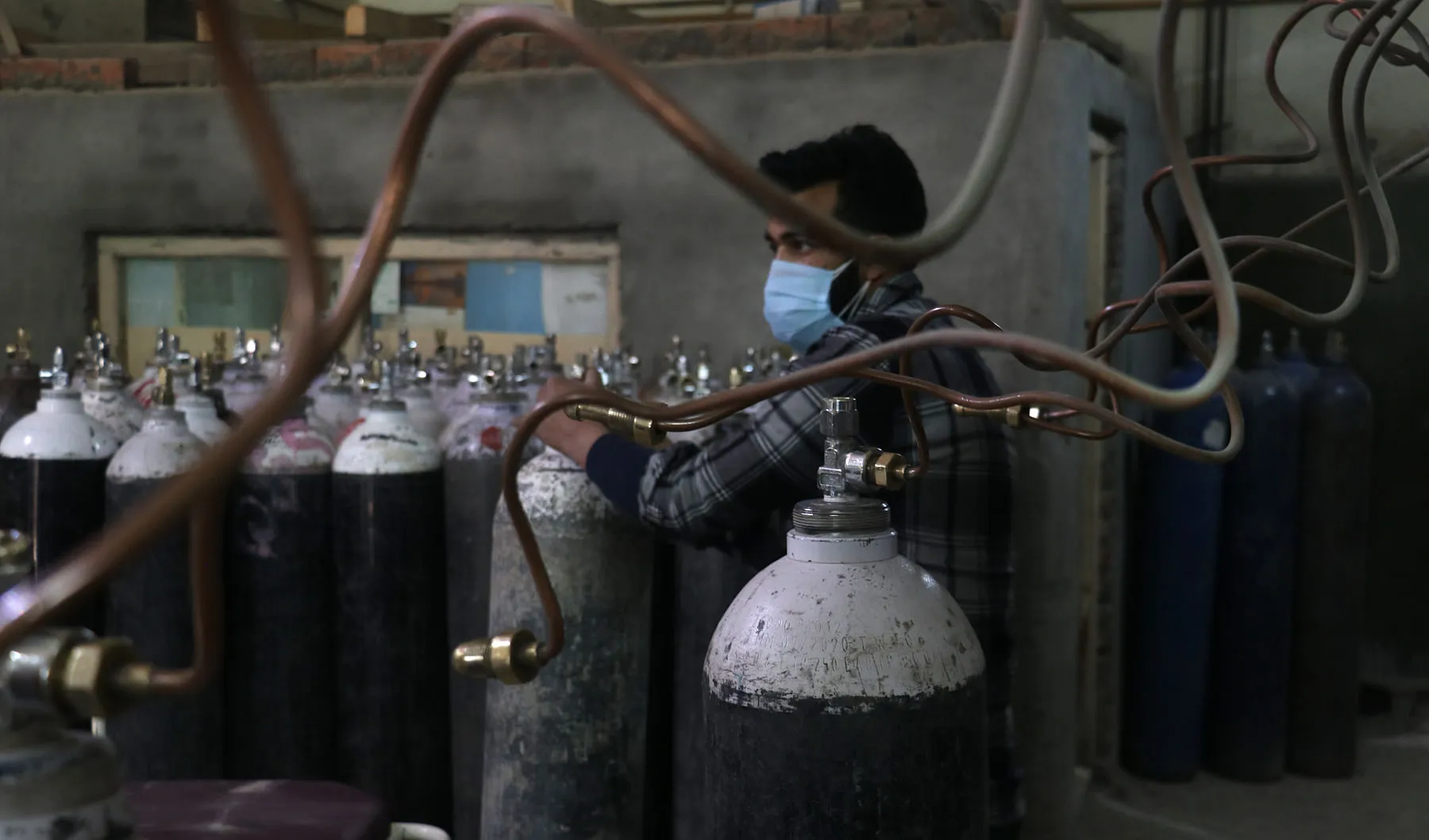The second wave of COVID-19 surge has caught us napping. Spending almost whole of 2020 as a COVID-19 year, we let our guard down towards the end of that year and early 2021. The policy decisions had been taken but we were deluded and slowed down our speed of implementation. Result: Alas! So many preventable deaths due to under-supply of medical oxygen.
What is Medical Oxygen?
From our school days we know that atmospheric air consists of a mix of 21 percent oxygen, 78 percent nitrogen, 0.9 percent argon and 0.1 percent other trace gases. Medical oxygen is a more concentrated (>95 percent) and contamination free form of oxygen than air, fit for use by the human body in illnesses leading to drop in oxygen levels.
Who should use medical oxygen?
Medical oxygen has been used in hospitals, nursing homes and even in homes since long but the COVID-19 has led to a several fold increases in its use. But not all patients of COVID-19 require oxygen as we have seen. Those who are asymptomatic or mildly symptomatic in home quarantine or any other designated quarantine/ isolation do not require oxygen. They only need to monitor their health after isolating. There is no need of preventive hoarding of cylinders or portable oxygen concentrators as it deprives those who really need them. Medical oxygen like any other medicine should be prescribed by a doctor as it is covered by Drugs and Cosmetics Act of 1940.
Why is medical oxygen falling short?
As the number of COVID-19 cases has surged tremendously in the second wave in India and number of moderate, and critical cases has proportionately (or disproportionately increased, as there are pointers towards enhanced virulence, aggressiveness and even immune escape of the mutant strains), the demand is far exceeding supply. Oxygen, be it in the form of cylinders, oxygen concentrators or huge oxygen plants in hospitals, is falling short. Many countries of the world have witnessed this shortage including the developed world not to speak of Low-Income(LIC)and Low Middle Income (LMIC)Countries like India.
Another factor responsible for shortage is maldistribution of oxygen resources. Based upon triaging of cases into mild, moderate and severe (including critical) Ministry of Health & family Welfare in June last year issued a clinical management protocol. That protocol needs to be followed in letter and spirit if resources are to be used where most needed. For example, the highest demand of oxygen is where severe and critical cases are housed where patients are in need of highflow nasal oxygen, CPAP, non-invasive/ invasive ventilation.
Moderate cases requiring lesser flows can be housed in district hospitals, with training and advisory support from tertiary care hospitals.
What steps have been taken for meeting the surge in oxygen demand due to COVID-19?
The Oxygen crisis has been recognized by the world at large in 2020 during the first wave of pandemic. At the international level WHO has formed an Access to COVID-19- Accelerator – Tools (ACT-A) global partnership, in the therapeutic pillar of which Oxygen and dexamethasone have been recommended as the only proven therapeutic agents. However the biomedical Consortium has a fund gap although efforts have been made for LIC and LMIC countries. We have also seen the international mobilization of oxygen and related resources for the cause. Government of India has also taken steps like restricting oxygen use for medical purposes and cutting down industrial use, strengthening the transportation system (oxygen trains, pressing defence airplanes for importing oxygen, diverting tanker use for oxygen supply) increasing the number of beds etc. But we must not forget enhanced production or import of small logistic accessories required for delivery such as flow meters, regulators, tubings, oxygen masks of all types, highflow nasal devices and cannulas, panels with ports etc.
What more can be done?
Government is already monitoring the oxygen status of HealthCare Facilities on a daily basis in our UT. However, some suggestions are put forward here for consideration. A wiser use of oxygen resources be it equipment, manpower or any other is need of the hour. Manpower is critical in the handling of oxygen and includes technical and nontechnical (unskilled) personnel. When the National Dialysis program was rolled out in the district hospitals of erstwhile state staff from existing pools in district hospitals were trained at SKIMS and GMC; the program implementation and operation were smooth and benefitted thousands of patients. A similar analogy can be applied for running the Centralised Medical gas & Manifold services in district hospitals who should depute their staff at the earliest to tertiary care hospitals having expertise in such services for very short courses. That will ensure that the plants set up in these health care facilities are utilised when most needed. Moderate cases are treated in the district hospitals and an informed referral system is followed when a patient’s condition deteriorates.
Every individual is responsible for his/ her own health and of their loved ones (and therefore whole society’s) for which reason we all should follow COVID appropriate behaviour and vaccination. We have witnessed enough vaccine hesitancy and missed opportunities earlier on. People finally woke up to the call of vaccines but a bit late.
Once again, I reiterate and request people not to unnecessarily keep portable oxygen concentrators and cylinders at standby. Maybe someone is really in need of that blessed breath! It could be any one of us! Many philanthropic agencies in the country and in our UT have been lending out oxygen concentrators /cylinders to the poor for free and to those who can afford on a rental basis. Let us pledge and in case we own one we could lend it to somebody in need.
Dr Samina Mufti is Assistant Professor of Hospital Administration at SKIMS Soura






